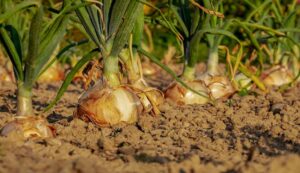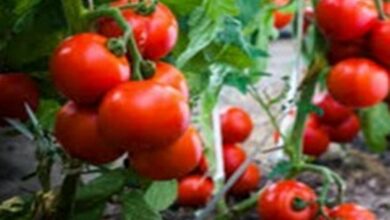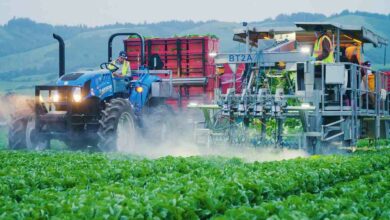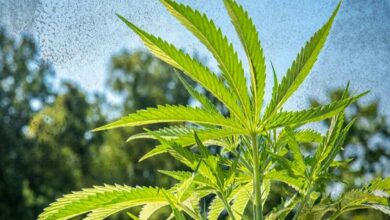Follow these methods to keep the onion crop away from purple blotch disease
Onion Cultivation: One of the main issues with onions is purple blotch disease. Due to the disease’s effects on leaves and stems, plants become stunted, which lowers agricultural yields. To lessen the illness’s severity and preserve crop quality, effective disease control is crucial.

The disease’s symptoms
Leaf spots: At first, there are tiny, pale yellow dots that are drenched in water. These spots have a golden ring around them and eventually become brown or purple.
Leaf blight: When the infection is severe, the leaves become parched. Stems could be impacted as well.
Reduced output results from delayed bulb development caused by premature leaf drying.
Purple blotch disease spread
Wind, contaminated plant debris, and wetness are the major ways that the illness spreads. The disease spreads more quickly in favorable circumstances, such as high humidity (80–90%), temperatures between 18 and 25°C, and rain or intensive irrigation.
Measures for Disease Management
1. Management of Agronomy
Observe agricultural rotation by growing onions alongside other crops.
Cleanliness: Clear the field of any leftover plant debris. They are the primary cause of illness.
Drainage Management: Keep water from standing still in the field.
Use of balanced fertilizer: Apply potash, phosphorous, and nitrogen in equal amounts. Disease incidence may rise with an excess of nitrogen.
2. Choosing resistant cultivars
Choose the disease-resistant cultivars that are advised for that specific region. For instance, resistant onion types like “Agrifound Dark Red” and “Arka Kalyan” aid in stopping the disease’s spread.
3. The Management of Biology
Incorporate bioagents such as Trichoderma spp. Trichoderma helps manage the purple blotch disease pathogen.
Apply 5% nimol (neem oil) spray.
Slurry made from cow dung: Using organic manure increases plants’ resilience to disease.
4. Management of chemicals
In the early stages of a disease outbreak, use chemical fungicides like Propiconazole 25 EC (1 ml per liter of water and spray) or Mancozeb 75 WP (2.5 grams per liter of water and spray).
Apply 2 grams of the fungicide chlorothalonil per liter of water. Apply twice, ten to fifteen days apart.
5. Management of irrigation
In the morning, apply drip irrigation.
Steer clear of overhead watering (sprinkler), which increases leaf wetness and encourages the disease.
Tips for preventing disease
Field monitoring: Identify symptoms early on to begin managing the illness.
Seed treatment: Before planting, treat the seeds with thiram or captan (2–3 g/kg seed).
Plant protection: Apply fungicides to crops that are 30 to 35 days old.
Field care done right: Get rid of weeds and anything that propagates illness.





